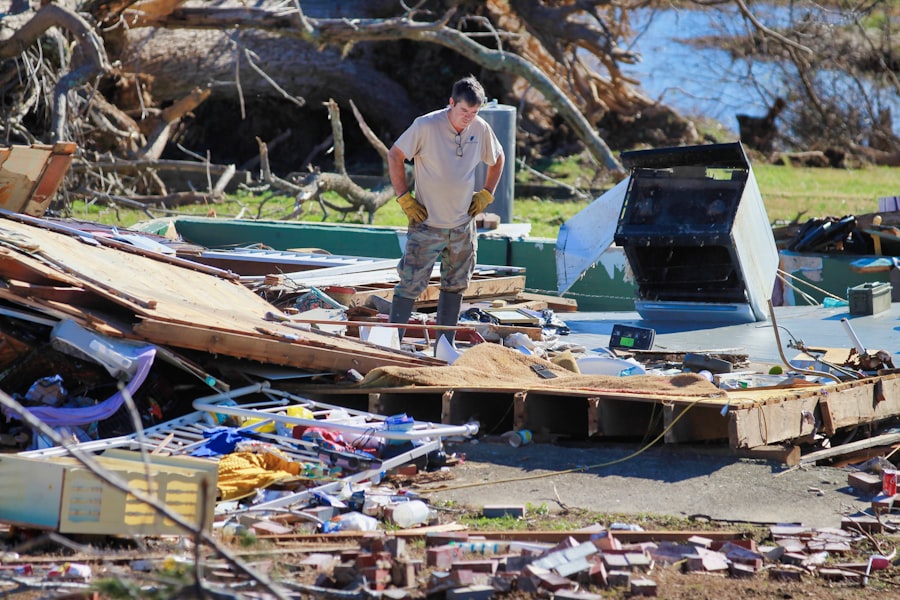The tornado that struck Nashville was a devastating event that left an indelible mark on the city and its residents. On that fateful night, the storm unleashed its fury, tearing through neighborhoods and uprooting lives in a matter of minutes. The sheer force of the winds, which reached speeds of over 160 miles per hour, caused widespread destruction, flattening homes and businesses alike.
The aftermath revealed a landscape of debris and despair, as families grappled with the loss of their homes and the emotional toll of such a catastrophic event. In addition to the physical destruction, the tornado also had a profound psychological impact on the community. Many residents were left in shock, struggling to comprehend the magnitude of what had occurred.
The sense of safety that once enveloped Nashville was shattered, leaving individuals feeling vulnerable and anxious about future storms. The emotional scars ran deep, as people mourned not only the loss of their possessions but also the sense of normalcy that had been so abruptly taken from them. The tornado served as a stark reminder of nature’s unpredictability and the fragility of human life.
Emergency Response and Rescue Efforts
In the wake of the tornado, emergency response teams sprang into action, working tirelessly to assess the situation and provide aid to those in need. First responders, including firefighters, police officers, and medical personnel, were deployed to the hardest-hit areas to conduct search and rescue operations. Their bravery and dedication were evident as they navigated through debris-laden streets, risking their own safety to save others.
The urgency of their mission was palpable, as they worked against the clock to locate survivors trapped beneath rubble. Local government agencies also played a crucial role in coordinating relief efforts. The Nashville Office of Emergency Management quickly established a command center to streamline communication and resource allocation.
Volunteers from various organizations joined forces with city officials to distribute food, water, and medical supplies to affected residents. The collaborative spirit that emerged during this crisis highlighted the resilience of the Nashville community, as individuals came together to support one another in their time of need.
Damage Assessment and Cleanup

As the immediate rescue efforts began to wind down, attention turned to assessing the extensive damage caused by the tornado. Teams of engineers and building inspectors were dispatched to evaluate structural integrity and determine which buildings could be salvaged. The scale of destruction was staggering; entire neighborhoods lay in ruins, with homes reduced to mere foundations.
The assessment process was meticulous, as officials sought to prioritize areas in dire need of assistance while ensuring that safety protocols were followed. Cleanup efforts commenced almost immediately, with heavy machinery deployed to clear debris from streets and public spaces. Volunteers joined forces with city workers to remove fallen trees and shattered glass, restoring some semblance of order to the chaotic landscape.
The cleanup process was not only about physical restoration but also about healing the community’s spirit. As residents worked side by side with strangers, bonds were forged through shared experiences of loss and hope for recovery. FEMA
Displacement of Residents and Temporary Housing
| City | Number of Displaced Residents | Temporary Housing Provided |
|---|---|---|
| New York | 5000 | 2000 |
| Los Angeles | 3000 | 1500 |
| Chicago | 2000 | 1000 |
The tornado’s destruction left many residents displaced, forcing them to seek temporary housing solutions in the aftermath of the disaster. Shelters were established throughout Nashville to provide refuge for those who had lost their homes. Local churches, community centers, and schools opened their doors to accommodate families in need, offering not just a roof over their heads but also a sense of community during a tumultuous time.
The demand for shelter far exceeded available resources, leading many to rely on friends or family for support. Others turned to hotels or short-term rentals, often at a significant financial burden.
The emotional toll of displacement weighed heavily on residents as they navigated uncertainty while trying to rebuild their lives amidst chaos.
Community Support and Relief Efforts
In the face of adversity, Nashville’s community spirit shone brightly as residents rallied together to support one another during this difficult time. Local organizations and charities mobilized quickly to provide essential resources such as food, clothing, and hygiene products for those affected by the tornado. Fundraising events sprang up across the city, with musicians hosting benefit concerts and businesses donating a portion of their profits to relief efforts.
Social media played a pivotal role in spreading awareness about available resources and encouraging volunteerism. Residents shared information about donation drives and volunteer opportunities, creating a network of support that transcended individual neighborhoods. This outpouring of compassion not only provided immediate assistance but also fostered a sense of unity among Nashville’s diverse population, reminding everyone that they were not alone in their struggles.
Rebuilding and Reconstruction Plans

As Nashville began to emerge from the immediate aftermath of the tornado, discussions about rebuilding and reconstruction took center stage. City officials convened meetings with architects, urban planners, and community leaders to develop comprehensive plans for restoring affected areas. The goal was not merely to rebuild what had been lost but to create a more resilient infrastructure capable of withstanding future disasters.
The vision for Nashville’s recovery included green spaces, better drainage systems, and updated building codes designed to withstand severe weather events. This collaborative approach aimed to ensure that the city would not only recover but thrive in the face of adversity.
Lessons Learned and Preparedness for Future Disasters
The tornado served as a wake-up call for Nashville regarding disaster preparedness and response strategies. In its aftermath, city officials recognized the need for improved communication systems that could disseminate timely information during emergencies. Enhanced training programs for first responders were also prioritized to ensure they were equipped with the skills necessary to handle large-scale disasters effectively.
Community education initiatives emerged as a vital component of preparedness efforts. Workshops were organized to teach residents about emergency plans, evacuation routes, and safety protocols during severe weather events. By fostering a culture of preparedness, Nashville aimed to empower its citizens with knowledge that could save lives in future crises.
Support and Assistance for Businesses and Local Economy
The tornado’s impact extended beyond residential areas; local businesses faced significant challenges as well. Many shops and restaurants were damaged or destroyed, leading to temporary closures that threatened livelihoods. In response, local government agencies implemented programs designed to assist affected businesses in their recovery efforts.
Financial aid packages were made available through grants and low-interest loans aimed at helping entrepreneurs rebuild their operations. Additionally, initiatives promoting “shop local” campaigns encouraged residents to support businesses in their communities during this critical time. By fostering economic resilience alongside physical recovery efforts, Nashville aimed to ensure that its local economy would rebound stronger than ever.
In conclusion, the tornado that struck Nashville was a harrowing event that tested the strength and resilience of its community. From emergency response efforts to rebuilding plans, every aspect of recovery highlighted the importance of collaboration and support among residents. As Nashville continues on its path toward recovery, it stands as a testament to the power of unity in overcoming adversity while preparing for future challenges ahead.
In the wake of the devastating Nashville tornado, many are left wondering about the phenomenon of power flash tornadoes. To learn more about what exactly a power flash tornado is, check out this informative article here. Additionally, for those interested in understanding the geographical factors that contribute to tornadoes, the article What is Tornado Alley? provides valuable insights. For more information on tornadoes and extreme weather events, visit the website here.

